Booking Service Guide for Visits
School Visit Booking - Telecommunications Gallery
This year the booking programs of Telecommunications include the "General Guided Visit" and "Thematic Guided Visit". Our facilitators will adjust the content and add hands-on or demonstration parts according to the needs and levels of students. In the "Science Demonstration", technical devices are used to explain and demonstrate topics related to electricity, light and sound, their scientific theories and applications in daily life. The workshops and electronic circuit courses emphasize hands-on activities in order to supplement what students have learned inside and outside of classrooms. The content will be adjusted according to students' levels so that they will enjoy and have fun in learning.
General Guided Visit
After the simple introduction by our Facilitators about the exhibitions of Postal/Philately and Telecommunications Galleries and other facilities, visitors can freely experience the most amusing and popular interactive games in the Museum.
Kind reminder:
- Teachers and students are welcome to bring cameras for photo-taking.
- We appreciate very much that teachers and helpers would assist us in taking care of the students during the visit.
- If seats are needed, please inform us upon reservation.
| Item | Audience |
|---|---|
| S1-001 "Basic Guided Visit" | Primary 1 or above, first visit to the Museum |
| S1-002 "Special Guided Visit" | Special guide for disabled students, Primary 1 or above. |
Thematic Guided Visit
A series of related interactive exhibits are displayed and students are encouraged to operate them by themselves. Through the explanation of specific topics and simple science demonstrations, students will have a clearer understanding of the scientific theories and effects concerning the exhibits.
Kind Reminder:
- Some guided visits include additional workshops. If needed, please extend the visiting time of the students accordingly.
- Free visit time for students has been included in the guided visit.
- The content and difficulty of the thematic guided visit will be adjusted to suit the different levels of students.
| Item | Audience | |
|---|---|---|
| Electromagnetism | S3-T01 "Electrostatics" | Primary 4 to Form 3 |
| S3-T02 "Electric Circuit" | Form 1 to 3 | |
| S3-T03 "Electromagnetic Induction" | Form 3 or above | |
| S3-T04 "Alternating Current" | Form 4 or above | |
| Transmission and Broadcasting | S3-T05 "Transmission and Broadcasting" | Primary 4 or above |
| Telegraph and Telephone | S3-T06 "Telegraph and Telephone" | Primary 4 or above |
| Light and Colours | S3-T07 "Wonderful Mirror" | Primary 1 to 3 |
SCIENCE DEMONSTRATION
Our Facilitators will use specially designed experimental equipment to demonstrate the different science theories and their applications in our daily life.
| Item | Audience |
|---|---|
| S3-D01 "Electrostatics" | Primary 4 or above |
| S3-D02 "Optical Fibers" | Form 1 or above |
| S3-D03 "Laser" | Form 4 or above |
| S3-D04 "Sound and Resonance" | Primary 4 or above |
| S3-D05 "Light and Colours" | Primary 4 or above |
| S3-D06 "Electromagnetism" | Form 1 or above |
| S3-D07 "Direct Current and Alternating Current" | Form 1 or above |
Workshops
The goal of the workshops is to encourage participants to learn science and its applications with a new perspective through different hands-on activities. A variety of workshops in different areas and levels are available. The workshop will be conducted in an interactive way between facilitators and participants through activities and explanations.
Kind reminder:
- Workshops can be conducted in Chinese and English, please compromised between schools and our museum staff.
- Kindly remind to make the reservation and confirm the number of participants at least 7 days in before the visit for the preparation of experiments
- Content and difficulty of workshops will be adjusted depending on the level of participants
- We appreciate that teachers and helpers would assist us in taking care of the students during the workshop.
- The arrangement of free time will be depend on the progress of the workshop.
- Workshops can be held in either museum or schools. Charges already included materials fee.
Electronic Circuit Courses
The goal of Electronic Circuit Courses is to inspire thinking and arouse interests in electronics technology. The course will be conducted in an interactive way of teaching, learning process as well as mutual study among participants. Participants are encouraged to learn and create collectively as a team through making practical electronic circuits products.
Kind reminder:
- Courses will be mainly conducted in Cantonese supplemented with English terminology.
- Duration and arrangement of the course will be compromised between schools and our museum staff.
- Courses can be held in either museum or schools. Charges already included materials fee.
- Students achieve attendance up to 80% will be obtained certificate after completion of the course.
| Item | Audience |
|---|---|
| S3-E01 "Application of Circuit and Soldering" | Form 3 or above |
| S3-E02 "Application of Photodiode - Photosensitive Mechanical Beetle" | Form 3 or above, completion of S3-E01 is recommended |
| S3-E03 "Introduction to Arduino" | Form 2 or above |
| S3-E04 "Intermediate Arduino Course" | Form 2 or above, completion of S3-E03 is recommended |
| S3-E10 "Introduction to Integrated Circuit (IC) and Its Applications" | 6 hours (4 sessions), 1.5 hours per lesson |
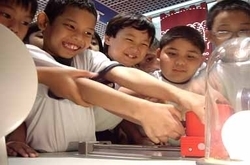
Item: S1-001 "Basic Guided Visit"
Audience: Primary 1 or above, first visit to the Museum
Duration: 60 minutes
Content:
After touring around the main exhibition area, visitors can "Design Your Own Stamp" with templates, fly over Macao in the "Flight Simulator", take a "Personal Picture Postcard" and send it to their families and friends, perform the weather forecast in the "Greenscreen Studio", try the Van de Graaff that makes their hair stand, dial the old telephone to call their friends, watch the films at "Mini-Theatre" and hunt the treasure in the "Stamp Lounge".
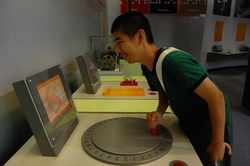
Item: S1-002 "Special Guided Visit"
Audience: Special guide for disabled students, Primary 1 or above.
Duration: 60 minutes
Content:
Our Facilitators will design a suitable guided tour upon request and accompany the visitors to "Design Your Own Stamp" with templates, fly over Macao in the "Flight Simulator", take a "Personal Picture Postcard" and send it to their families and friends, perform the weather forecast in the "Greenscreen Studio", dial the old telephone to call their friends, watch the films at "Mini-Theatre".
Interactive option:
"Design Your Own Stamp", "Flight Simulator", "Personal Picture Postcard", "Greenscreen Studio", "Mini-Theatre" or "Handmade Drum".
Electromagnetism
Electromagnetism (electricity and magnetism) is part of classical physics, which analyses the relationships between electric charges, electric field, and magnetic field.
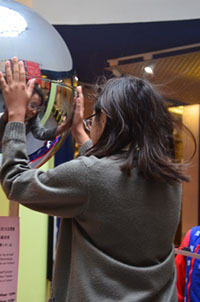
Item: S3-T01 "Electrostatics"
Audience: Primary 4 to Form 3
Duration: 60 minutes
Content:
Our Facilitators will introduce how to induce electrostatics in our daily life. Students can use a piece of fur and a plastic rod to induce static electricity and verify its existence with the electroscope. Besides, through the operation of the Van de Graaff generator that generates high voltage static electricity, students will learn how lightning happens. Students can even touch the metal sphere of the generator with their hands. The electric charges accumulated on the sphere will be carried up to the surface of human body. Since like charges repel each other, their hair will stand up.
Interactive option:
Free visit or additional 60-minute workshop "Electroscope - I" (Primary: S3-W01); "Electroscope - II" (Secondary: S3-W14).
Electromagnetism
Electromagnetism (electricity and magnetism) is part of classical physics, which analyses the relationships between electric charges, electric field, and magnetic field.
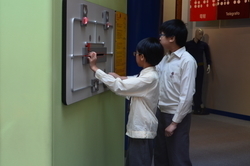
Item: S3-T02 "Electric Circuit"
Audience: Form 1 to 3
Duration: 60 minutes
Content:
Our Facilitators will introduce the components of a basic serial / parallel circuit, their characteristics, differences, advantages, disadvantages, and applications in our daily lives. Students will be invited to use the components to connect a simple circuit and use meters to measure the current and voltage of the circuit. Students can learn about conductors and insulators, the principle and application of voltage divider, the usage of charging and discharging of a capacitor in a direct current circuit through a series of small experiments.
Interactive option:
Free visit or select 1 additional 60-minute workshop from "Handmade Banknotes Detector" (S3-W04), "Handmade Battery" (S3-W06) , Soldering for Beginners (S3-W07A) or Soldering DIY (S3-W07B).
Electromagnetism
Electromagnetism (electricity and magnetism) is part of classical physics, which analyses the relationships between electric charges, electric field, and magnetic field.
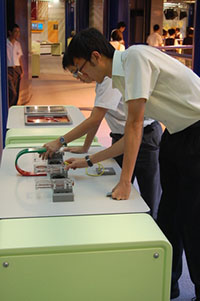
Item: S3-T03 "Electromagnetic Induction"
Audience: Form 3 or above
Duration: 60 minutes
Content:
We shall use a container filled with oil and iron powder to show the magnetic field of magnets. Electromagnetic induction is also shown by flowing current in a solenoid, or by moving coils in a static magnetic field. Besides, an electric generator is provided, with which visitors can feel the magnetic force induced by the electromagnet that are connected to the generator. In addition, an amusing exhibit will show the repellent force between two magnetic fields according to the Lenz's Law.
Interactive option:
Free visit or select 1 additional 90-minute workshop from "Motor and Generator" (S3-W09) or "Electromagnetic Swing" (S3-W08).
Electromagnetism
Electromagnetism (electricity and magnetism) is part of classical physics, which analyses the relationships between electric charges, electric field, and magnetic field.
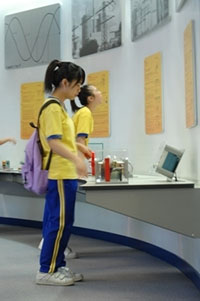
Item: S3-T04 "Alternating Current"
Audience: Form 4 or above
Duration: 60 minutes
Content:
Students can operate interactive exhibits to learn the structures, types and output of electric generators; to understand the principle of a transformer and the relationship between the number of coils and voltage in a transformer; and to compare the power loss of transmission lines while using high/low voltage for the transmission of electricity and the reason of using high voltage power lines. In addition, students can learn the phenomenon of phase shift, resonance of an A.C. circuit caused by capacitors and inductors as well as the power control circuit and its applications. If there is time available, the principle of charging and discharging of a capacitor, the effect of an inductor in a circuit, and the reactance of capacitors and inductors in A.C. circuit will also be introduced.
Interactive option: Free visit
Transmission and Broadcasting
Transmission plays an indispensable role in human communication. Until now, there are many different types of transmission and you may see their importance in our daily life. In addition, message needs to be processed before and after transmission, e.g. the composition technique widely used in TV studio to compose different sources of image, processing and saving formats of audio and video information, etc.
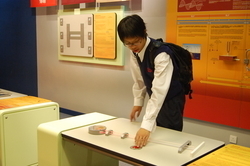
Item: S3-T05 "Transmission and Broadcasting"
Audience: Primary 4 or above
Duration: 60 minutes
Content:
We shall briefly introduce the different types and functions of wired and wireless transmission, and demonstrate the application of optical fibers for transmission with several interactive exhibits. Besides, a TV studio is presented to show the composition technique that is widely used to compose different sources of image. Students will learn why the background of the picture can be removed. If time is available, students can explore the information processing area to know different kinds of saving formats of audio and video files.
Interactive option:
Free visit or additional 60-minute workshop "Optical Fibers DIY" (S3-W02).
Telegraph and Telephone
Telegraph is one of the earliest equipment of long-distance communication. It uses current (cable) or electromagnetic waves (wireless) as the carrier to transmit messages through a coding and decoding process. On the other hand, telephone is the equipment that uses electrical signals to implement the duplex audio communication. Both of them play important roles in the history of communication.
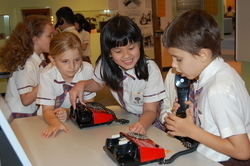
Item: S3-T06 "Telegraph and Telephone"
Audience: Primary 4 or above
Duration: 60 minutes
Content:
Our Facilitators will introduce how to operate telegraph and teletype machines and explain the development, structure, principle and operation of telephone. Demonstration will be conducted to let students understand the functions of telegraph devices, telephones and telephone switching systems.
Interactive option:
Free visit or additional 60-minute workshop "Handmade Telegraph" (S3-W03).
Light and Colours
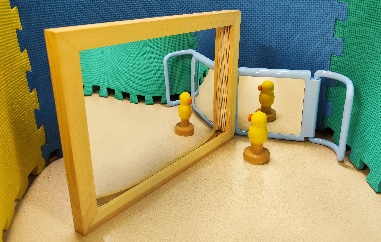
Item: S3-T07 "Wonderful Mirror"
Audience: Primary 1 to 3
Duration: 40 minutes
Content:
This program uses an interactive approach to introduce students to the properties and uses of mirrors. Students are invited to learn about the properties of mirrors by look at themselves in the mirror and imitate the appearance of others in the mirror, playing games and creating unique colour patterns using mirror surface and angle imaging principle. In addition, students can discover the wonders of mirror by appreciate different kinds of kaleidoscopes as well as have fun looking through a ha-ha mirror.

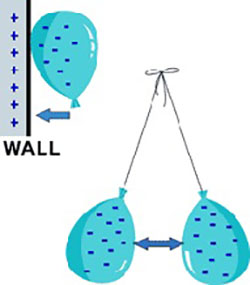
Item: S3-D01 "Electrostatics"
Audience: Primary 4 or above
Duration: 40 minutes
Content:
In the cold and dry weather, we can often experience static electricity. When we hold a door handle, open metal cabinet or touch others, we can feel the spark on our fingers, which may sometimes take us by surprise. In fact, how does this phenomenon come about? What is static electricity? Does it cause any harm to us? Actually, static electricity is a common phenomenon in nature. It can be caused by friction, contact or induction. Let's learn ways to avoid static electricity so that we can prevent any danger that it may cause us.
The demonstration will be mainly about the causes of static electricity and its related phenomena, including:
- Cause of static electricity: Demonstrate the production of static electricity in different circumstances: electrification by friction, contact and induction.
- Danger of static electricity: The human body and the environment may carry high voltage static electricity, a few thousand volts or more. The electricity discharged by static electricity may also cause damage to surrounding electronic equipment.
- How to prevent static electricity: Ways to prevent static electricity includes discharging, neutralizing, damping, blocking and earthing.
- Interesting electrostatic phenomena - Electrification by induction experiment: Use a charged rod to deflect a water column by induction; use a charged rod to make a tin can roll by induction.
- Interesting electrostatic phenomena - Electrostatic discharge experiment: Demonstrate the Wimshurst machine and the Van de Graaff generator.
- Applications of static electricity in our daily life: Applications include photocopying machine, electrostatic precipitator, electrostatic painting, etc.
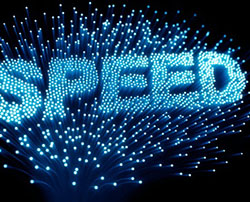
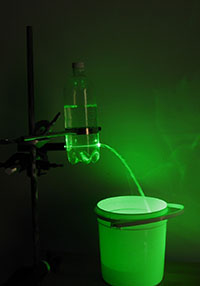
Item: S3-D02 "Optical Fibers"
Audience: Form 1 or above
Duration: 40 minutes
Content:
Optical fiber is an important medium in modern communication. From the Internet to medical equipment, optical fiber is influencing our lives. Recently, telecom operators began providing Fiber to the Home Broadband Service. The access speed is much faster than before and users comment that the speed is incomparable. Optical fiber has suddenly become a hot topic. But what is optical fiber? What are the theories behind it? What benefits has it brought us?
The demonstration will mainly introduce the structure of optical fibers, the theories of message transmission, and compare optical fiber and copper wire, including:
- History of wired communication: Usage of copper wire and its limitations, optical communication at its early stage.
-
Operational theories of optical fibers
- Characteristics of light: Introduce reflection, refraction and the linear propagation of travel as characteristics of light.
- Optical phenomena of total internal reflection: Use simple tools to demonstrate a light guiding experiment of a water column.
- The birth of modern optical fibers: Introduce the technical difficulties encountered in producing modern optical fibers, the production methods and various types of optical fibers.
- Experiment of sound transmission through optical fibers: The use optical fibers to transmit optical signals.
-
Difference between optical fiber and copper wire
- Physical properties: Compare the physical properties of optical fibers and copper wire.
- Anti-electromagnetic influence experiment: Use optical fibers and copper wire as the medium of transmission, observe their interference conditions.
- Applications of optical fibers: Endoscope, optical fiber network (data transmission), compare broadband internet access through optical fibers and fixed line (ADSL).
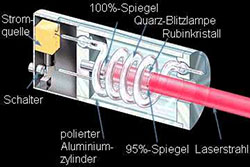
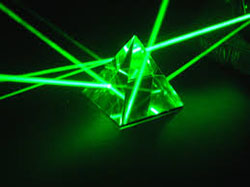
Item: S3-D03 "Laser"
Audience: Form 4 or above
Duration: 40 minutes
Content:
In 1960, a kind of magical light "laser" was born. Since then, laser quite often appears in science fiction movies. Does laser exist only in the future high technological world? Or does it actually exist in our daily life? Let's explore and discover more about this fascinating magical light!
The demonstration concerns the theories and properties of laser, and also its applications, including:
- The theories of the production of laser: Explain the atomic structure of substance, the principle of energy levels and electronic transition, and the production methods of laser.
-
Properties of laser
- Path: Demonstrate the transmission path of laser.
- Direction: Comparison between regular light source and laser.
- Coherence: Explain the coherence of laser.
- Monochrome: Introduce the monochromatic light transmission of laser.
-
Applications of laser
- Cutting: Demonstrate cutting of paper, glass, plastic and different materials using a CO2 laser cutter.
- Applications of laser - Communication: Demonstrate and explain the application of optical fibers in communication, and the switching methods between analog and digital signals.
- Others: Introduce the applications of laser in other areas.
- The safety of laser: Explain the danger of laser and demonstrate with strong laser beams.
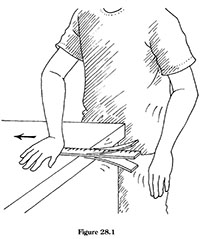
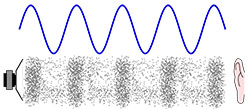
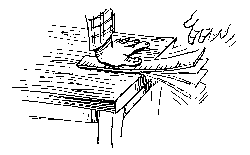
Item: S3-D04 "Sound and Resonance"
Audience: Primary 4 or above
Duration: 40 minutes
Content:
We hear different types of sounds every day. But do we know the theory of sound production? In Physics, what are the theories and phenomena related to sound? Actually, sound is a wave phenomenon caused by the vibration of objects. Vibration will cause different media (including gas, liquid and solid) to produce changes in their density, forming longitudinal waves or what we call "sound waves".
The demonstration concerns the properties of waves and related acoustic phenomena, including:
- Production of sound: Demonstrate how to produce sound by vibration.
-
Properties of sound - the three elements of sound
- Volume - Amplitude: Introduce the relationship between volume and wave amplitude, and the unit for measuring volume - Decibel (dB).
- Pitch - Frequency: Introduce the relationship between pitch and wave frequency, and the unit for measuring pitch - Hertz (Hz).
- Timbre - Waveform: Introduce the relationship between timbre and waveform, and the overtones produced by different waveforms.
- Transmission of sound: How sound transmitted through mediums.
-
Interesting acoustic phenomena
- Resonance: Introduce resonance and learn about it from the perspective of Physics and phenomena and experiments related to resonance.
- Standing wave: Introduce standing wave and its relationship with acoustics, phenomena and experiments related to standing wave.
- Applications related to acoustics in our daily life.
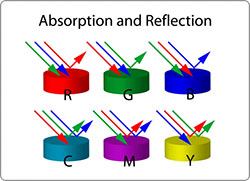
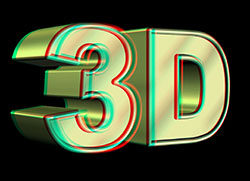

Item: S3-D05 "Light and Colours"
Audience: Primary 4 or above
Duration: 40 minutes
Content:
Sunlight not only gives us light and warmth, but also a lot of beautiful natural phenomena like rainbow, blue sky and sunset glow, etc. But have we ever though about these phenomena are related to the magical effects of light? Light enables us to see our colourful world. Colour is actually a visual effect in response to light produced as seen through our eyes, brain and past experiences.
The demonstration is about the properties of light and related phenomena, including:
- Properties of light: Make use of laser to demonstrate the linear propagation of light, reflection and refraction.
-
Dispersion phenomena of light
- Compare sunlight, white light and laser by observing their refraction properties after passing through a prism.
- Make an artificial rainbow. Observe and analyze the factors that led to the creation of a rainbow.
- Properties of rainbow: Why is it a curve? Why is it always in a high up position? From which angle can we see a rainbow?
-
Types of colours:
- Compare monochromatic light and coloured light
- Mixing of the colours of light
- Origin of the three primary colours. Use different colour lights to compose lights of different colours
-
Relationship between colour of objects and light:
- Explain how the colours of objects are brought about.
- Compare the different colours of objects under lamps of different colours.
- Applications: 3D glasses, stage effect and filter.
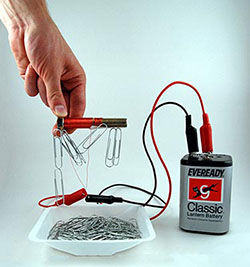
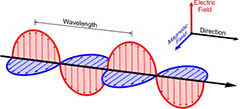
Item: S3-D06 "Electromagnetism"
Audience: Form 1 or above
Duration: 40 minutes
Content:
Since the discovery of the relationship between electricity and magnetism in the early 19th century, a new field of Physics is opened up - Electromagnetism. Since then, we entered to the era of electrification. Following the creation of the power generator, electromagnetism became indispensible to technological advancement. However, how much do you know about electromagnetism? Do you know the intrinsic link between electricity and magnetism? In reality, electricity can create magnetism, and vice-versa. In our daily life, a lot of electrical appliances make use of the theory of electromagnetism.
The demonstration concerns the interaction between electricity and magnetism, and some related phenomena, including:
- Introduce the majors topics of electromagnetism: Basic properties of electromagnetism
-
Electricity generates magnetism
- How is the electromagnetic field produced? Observe the magnetic effect of electric current produced by energized conductors.
- Make use of the right-handed screw rule to judge the direction of electromagnetic field.
-
Magnetism generates electricity
- Let's see how electric current is produced by a coil of changing magnetic field.
- How to make use of the electromagnetic induction phenomenon for human power generation.
-
Mutual induction
- Based on the theory of electromagnetic interaction, process energy transmission using two unconnected coils.
- Let's see how the magical wireless power can light up a lamp without battery!
-
Lenz's Law
- Observe how the induced current will cause hindering movement to the magnetic field under the magnetism generating electricity phenomenon.
- Use of the Lenz's Law to find out the direction of electric current produced by the magnetism generating electricity phenomenon.
-
Eddy Current
- Introduce the formation process of eddy current and its applications.
- Analyze some related interesting experiments.
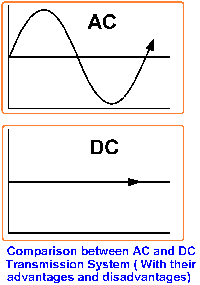
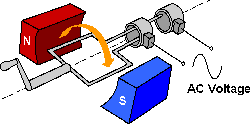
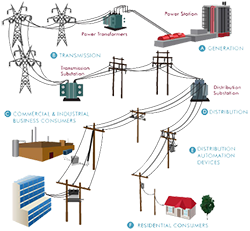
Item: S3-D01 "Direct Current and Alternating Current"
Audience: Form 1 or above
Duration: 40 minutes
Content:
Electricity is indispensable to our modern day life. Whether it is entertainment or machinery for industrial production, electricity is used. What is direct current? What is alternating current? How much do you know about electricity? Join this demonstration and recharge your knowledge database on electricity!
The demonstration concerns the theories and properties of direct current, production and transmission process of alternating current, including:
-
Direct current
- Basic knowledge: Introduce the definition, properties and applications of direct current, learn about the relationship between electrons movement and electrical energy transmission in the electric circuit.
- Joule's Law: Demonstrate the thermal effects of electric current and Joule's Law.
- Reasons for choosing direct current: Summarize the advantage and disadvantage of two kinds of electricity in terms of transmission, application and loss.
-
Alternating current
- Journey of alternating current: Introduce direct current in terms of its process from its production at the power station to its distribution to different districts.
- Learning about transformer: Show an actual transformer and explain its theory and applications.
- Knowing about the electricity supply of Macao: Explain the electricity transmission system and distribution of electrical substations in Macao.
- Secrets in our electricity bill: Explain the different charges on the electricity bill and how to calculate the bill.
- Have a look at direct current and alternating current: Use the oscilloscope to observe direct current and alternating current.
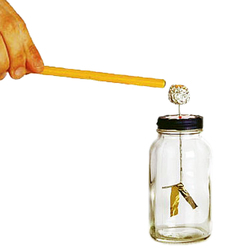
Item: S3-W01 "Electroscope - I"
Audience: Primary 3 to 6
Duration: 60 minutes
Content:
When we rub a plastic ruler, balloon or similar kind of objects against a piece of velvet cloth, it can attract scraps of paper with the static electricity produced. But how can we know if an object carries static electricity? Let's make an electroscope with simple materials to learn more about the basic theory of static electricity.
Charge:
Held in the museum - Free of charge. At schools - MOP30.00 per student.
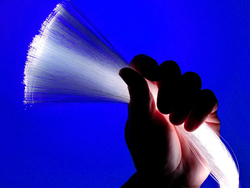
Item: S3-W02 "Optical Fibers DIY"
Audience: Primary 4 to Form 3
Duration: 60 minutes
Content:
Optical fibers have played a key role in modern telecommunications. In this workshop, students will start from the development history of optical fiber; learn about the structure as well as the principle behind. Also, a simple optical fiber souvenir will be made by students in order to understand optical fibers' characteristics and applications in our daily lives.
Charge:
Held in the museum - Free of charge. At schools - MOP30.00 per student.
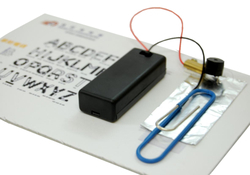
Item: S3-W03 "Handmade Telegraph"
Audience: Primary 4 to Form 3
Duration: 60 minutes
Content:
Electric telegraph is the world's first form of electrical telecommunications. It uses electricity as a medium to transfer encoded messages. Following the development of new communication technologies, telegraph has become obsolete but its basic principles are still worth learning. In this workshop, students will make a simple telegraph device and understand the principles of transmitting messages using Morse code. Through various activities, students will have a better knowledge on the concept of message encoding and decoding.
Charge:
Held in the museum - Free of charge. At schools - MOP30.00 per student.
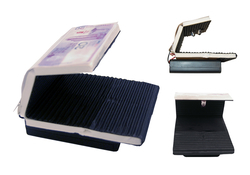
Item: S3-W04 "Handmade Banknotes Detector"
Audience: Form 1 to 3
Duration: 60 minutes
Content:
In this workshop, students will learn how to construct a currency detector and then use it to test different regions' currencies. In the process, they will learn the knowledge of electric circuits as well as different cultures behind each region's currency.
Charge:
Held in the museum - Free of charge. At schools - MOP30.00 per student.
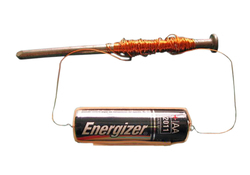
Item: S3-W05 "Electromagnet"
Audience: Primary 4 to Form 2
Duration: 60 minutes
Content:
This workshop will demonstrate how to make electromagnet, a special kind of magnet that only has magnetic force when the electric power is on. Students will learn about the Oster's electromagnetic effect and Ampere's right hand rule, and also understand various factors which affect the magnetic force of the electromagnet. After that, students will have a greater understanding on how to generate magnetic field by electricity.
Charge:
Held in the museum - Free of charge. At schools - MOP30.00 per student.
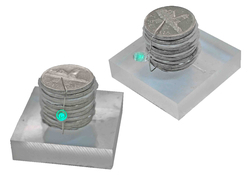
Item: S3-W06 "Handmade Battery"
Audience: Primary 4 to Form 2
Duration: 60 minutes
Content:
This workshop will demonstrate how to make the first battery, the "Voltaic pile", using only MOP subsidiary coins. Students will learn batteries' basic construction, principle of generating and measuring electricity. Further study will be arranged on how to choose different materials for electrolyte and electrode.
Charge:
Held in the museum - Free of charge. At schools - MOP30.00 per student.
Remark:
Students are requested to bring 10 coins of the same size (MOP 0.50 or 1.00) to the workshop.
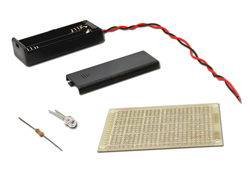
Item: S3-W07A "Soldering for Beginners"
Audience: Form 1 or above
Duration: 60 minutes
Content:
Soldering is the process of connecting electronic components and the circuit board using metal with low melting point. Soldering skill is especially important to the performance of the whole electric circuit. Students who learn soldering the first time will learn about soldering tools and basic operations.
Charge:
Held in the museum - Free of charge. At schools - MOP30.00 per student.

Item: S3-W07B "Soldering DIY"
Audience: Form 1 or above
Duration: 60 minutes
Content:
Electronic device is usually assembled with multiple electric components. To correctly connect them requires a special knowledge on soldering skills. In this workshop, students will learn and master the basic soldering skills by practical operation. After the workshop, students will be able to perform simple repairs on electronic products.
Charge:
Held in the museum - Free of charge. At schools - MOP30.00 per student.
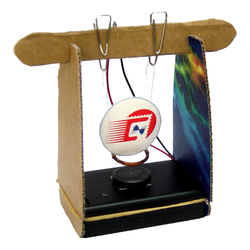
Item: S3-W08 "Electromagnetic Swing"
Audience: Form 3 or above
Duration: 60 minutes
Content:
In this workshop, students will learn how to make an automatic swing based on simple electromagnetic principles like magnetic effect in electrical wire and repulsion between like poles. Through the making process, students can apply their knowledge from their textbooks and understand more about the principles and applications of electromagnetism.
Charge:
Held in the museum - Free of charge. At schools - MOP30.00 per student.
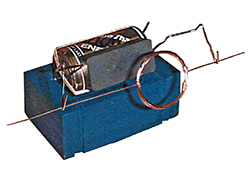
Item: S3-W09 "Motor and General"
Audience: Form 3 or above
Duration: 60 minutes
Content:
Students will learn the basic structure and operating principle of one of the most frequently used items in daily life, the electric motor. Different topics will also be introduced during the workshop in order to deepen their impression on electromagnetism, including induction, application of the electric motor as well as the electric generator.
Charge:
Held in the museum - Free of charge. At schools - MOP30.00 per student.
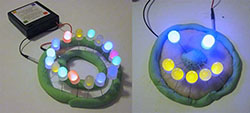
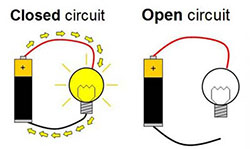
Item: S3-W10 "Circuit Puzzle"
Audience: Primary 4 to 6
Duration: 60 minutes
Content:
This workshop will introduce the characteristics of electric components. Students will use puzzles or plasticine to compose a closed circuit. Through different games they will have a deeper understanding on the subject of circuits and learn how to prevent short circuit.
Charge:
Held in the museum - Free of charge. At schools - MOP30.00 per student.
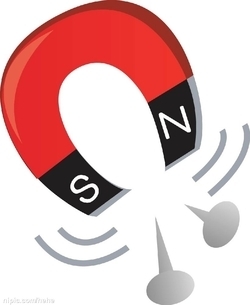
Item: S3-W11 "Secret of Magnet"
Audience: Kindergarten 3 to Primary 3
Duration: 60 minutes
Content:
This workshop will demonstrate the characteristics of one of the most commonly used items in our daily life, the magnet. With experiments and games, students will learn how to distinguish magnet from other matters, observe the invisible magnetic field lines, understand properties and behaviours of magnetic materials, as well as the principles of magnetic levitation. Finally, a "cute magnet stickers" will be made by students to deepen their impression on magnetism.
Charge:
Held in the museum - Free of charge. At schools - MOP30.00 per student.
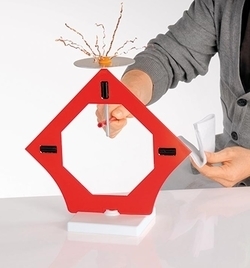
Item: S3-W12 "Amazing Static Electricity"
Audience: Primary 1 to 3
Duration: 60 minutes
Content:
This workshop will demonstrate different effects on static electricity through various experiments and games. Types, size and states of materials will result in different static electricity effects. Through activities and games, students will have a deeper impression on the subject of electrostatics.
Charge:
Held in the museum - Free of charge. At schools - MOP30.00 per student.
Item: S3-W13 "Fun Group Game"
Audience: Primary 3 or above
Duration: 60 minutes
Content:
In this workshop, participants will be divided in groups and learn how to use different communication tools and methods to complete different tasks and missions. Through games and activities, participants will experience the importance of communication as well as cooperation between team members.
Charge:
Held in the museum - Free of charge. At schools - MOP30.00 per student.
Note:
For the purpose of group division, the number of participants should not be more than 35. The venue of the activities includes both the indoor and outdoor areas of the Museum. Please put on casual or sports wear.
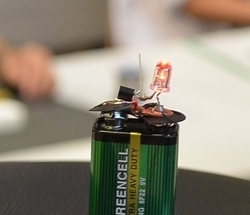
Item: S3-W14 "Electroscope - II"
Audience: Form 1 or above
Duration: 60 minutes
Content:
In this workshop, students will make an advanced electroscope by FET, a semi-conductor component which measures the electrostatic field, thus determining the size and properties of the static electrical charge.
Charge:
Held in the museum - Free of charge. At schools - MOP30.00 per student.
Note:
Hot soldering iron will be used for welding during the workshop.
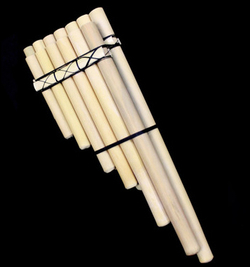
Item: S3-W15 "The Fun of Sound & Wind Music"
Audience: Primary 3 to 6
Duration: 60 minutes
Content:
Sound will be produced when air inside a straw vibrates. In this workshop students will make their own pan flute with straws based on the principle of sound vibration and resonance. In the meantime, they will also learn how to tune the pan flute in order to make a sweet and pleasant sound.
Charge:
Held in the museum - Free of charge. At schools - MOP30.00 per student.
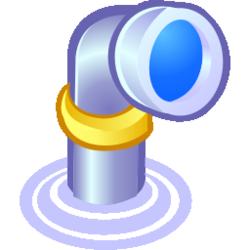
Item: S3-W16 "Periscope DIY"
Audience: Primary 1 to 6
Duration: 60 minutes
Content:
Periscopes in submarines are used to observe the water surface from deep under the water. In this workshop, students will make a simple periscope similar to the submarine periscopes based on the principle of light reflection, using only paper and mirrors.
Charge:
Held in the museum - Free of charge. At schools - MOP30.00 per student.
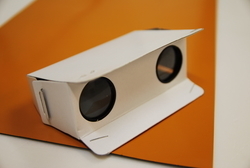
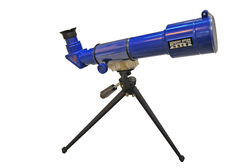
Item: S3-W17 "Telescope DIY"
Audience: Primary 3 to 6
Duration: 60 minutes
Content:
Students will make a simple telescope by different pieces of lens. During the workshop, different kind of concave and convex lens will be tested and explained to show how light can render a telephoto effect by reflection and refraction.
Charge:
Held in the museum - Free of charge. At schools - MOP30.00 per student.
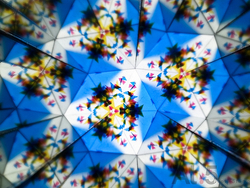
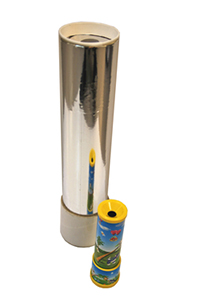
Item: S3-W18 "Bling Bling Kaleidoscope"
Audience: Primary 3 to 6
Duration: 60 minutes
Content:
Kaleidoscope is an optical instrument that demonstrates the law of reflection beautifully. In this workshop, students will learn how to make their own kaleidoscopes using only three mirrors. During time, they can understand more about the law of reflection and watch kaleidoscopes' colourful, ever-changing patterns.
Charge:
Held in the museum - Free of charge. At schools - MOP30.00 per student.
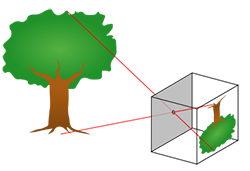
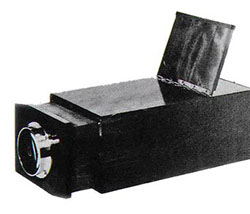
Item: S3-W19 "Pinhole Camera"
Audience: Primary 6 to Form 3
Duration: 60 minutes
Content:
Photographic camera is an important instrument for documenting our daily-life and history. Although there are so many kinds of camera, their basic principle stays the same. In this workshop, we will go back to its origin by making a simple pin-hole camera to study the basic principle of light pin-hole imaging, while at the same time, understand the mechanism behind the cameras.
Charge:
Held in the museum - Free of charge. At schools - MOP30.00 per student.
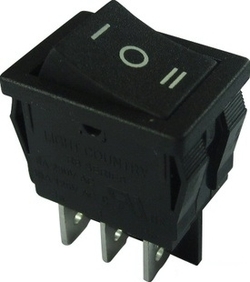
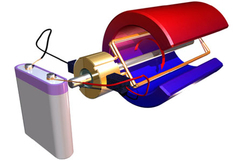
Item: S3-W20 "Control of Direct Current Motor"
Audience: Form 3 or above
Duration: 90 minutes
Content:
DC motor is one of the most common electro-mechanic elements in our daily life. In this workshop students can learn the basic principles of DC motor as well as how to control it by various types of methods, including control by electric signals using electric components and circuit design.
Charge:
Held in the museum - Free of charge. At schools - MOP30.00 per student.
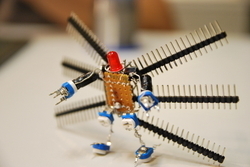
Item: S3-W21 "Component Commando"
Audience: Primary 4 or above
Duration: 2 lessons, 90 minutes per lesson or 1 lesson with 180 minutes
Content:
A variety of electronic components are used in different electronic devices. Their names and functions are normally not known to us. In this workshop, students will learn the names, functions and purposes of those components through assembling robots and small accessories by electronic components.
Charge:
Held in the museum - Free of charge. At schools - MOP30.00 per student.
Note:
For junior secondary school students, hot soldering iron will be used for welding during the workshop.
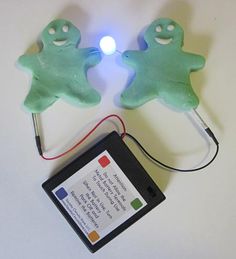
Item: S3-W22 "Handmade Electric Circuit"
Audience: Primary 1 to 3
Duration: 60 minutes
Content:
Students will learn about the common electronic components, and then use clay to connect different electronic components to form electric circuits with different functions. These will help to increase their understanding of electric circuits.
Charge:
Held in the museum - Free of charge. At schools - MOP30.00 per student.
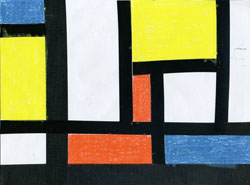
Item: S3-W23 STEM Geometry Studio Series - "Mondrian's Red, Blue and Yellow Squares"
Audience: Primary 4 to Form 2
Duration: 60 minutes
Content:
The Geometric Form School by the former Dutch painter, Piet Cornelies Mondrian, has great influence on design and architecture. He has developed unique drawing rules that include a series of abstract drawings with squares, straight lines and shapes in original colours. His "Composition with Red Yellow Blue and Black" is an epoch-making masterpiece. After learning about the life and works of the painter, the students will create their own geometric masterpieces with their mathematical minds and paint brushes.
Charge:
Held in the museum - Free of charge. At schools - MOP30.00 per student.
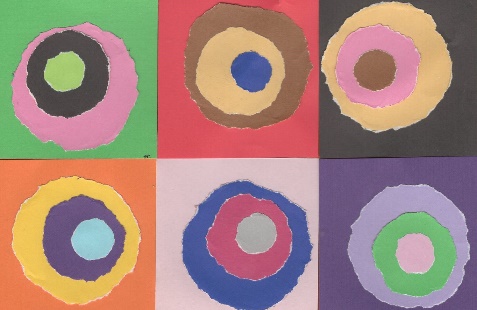
Item: S3-W24 STEM Geometry Studio Series - "Kandinsky's Colour Concentric Circles"
Audience: Primary 1 to 4
Duration: 60 minutes
Content:
Wassily Kandinsky was a famous Russian painter and art theorist, and is considered to be the pioneer of abstract art in the 20th century. Kandinsky believed that our vision and hearing can be interrelated, thus his paintings are deeply influenced by music and colour theory. For him, colours were like the piano keyboard, playing notes made of lines and geometric shapes, allowing people to "listen" to his paintings. In this workshop, we will try to imitate one of Kandinsky's famous works, "Colour Study: Squares and Concentric Circles", in addition to introducing Kandinsky's life and paintings, and try to feel the effect of juxtaposition of various colours in the process of handwork.
Charge:
Held in the museum - Free of charge. At schools - MOP30.00 per student.
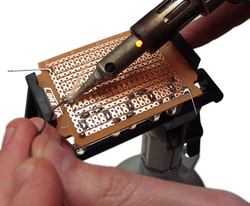
Item: S3-E01 "Application of Circuit and Soldering"
Audience: Form 3 or above
Duration: 6 hours, 1.5 hours per lesson
Content:
Switches, resistors, capacitors, diodes, transistors and integrated circuits are the most common electronic circuit components. These components are applied in household appliances and industrial devices to perform different functions. Before understanding the usage of these components, we need to understand two basic connection methods - series & parallel. During this course, through simple calculation and use of a multifunctional meter, students will learn the difference between these two types of connection and also soldering technique.
Charge:
Held in the museum - MOP50.00 per student. At school - MOP70.00 per student.
Outline:
- Basic introduction on properties and function of electronic components and circuits.
- Measurement of different quantities in electronic components and circuit by multimeter.
- Series and parallel circuits.
- Ohm's law.
- Soldering techniques training and practice.
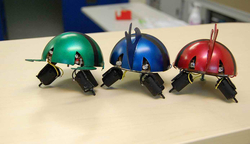
Item: S3-E02 "Application of Photodiode - Photosensitive Mechanical Beetle"
Audience: Form 3 or above, completion of S3-E01 is recommended
Duration: 7.5 hours, 1.5 hours per lesson
Content:
Students will be introduced about LEDs, photodiodes, NPN type transistors, DC motor and their application as a whole. They will use the above-mentioned components to build a photosensitive mechanical beetle, which follows light to guide its way.
Charge:
Held in the museum - MOP50.00 per student. At school - MOP70.00 per student.
Outline:
- Review on electronic components and soldering technique.
- Introduction to LEDs, photodiode, NPN transistor and DC motor.
- Construction of the photosensitive mechanical beetle.
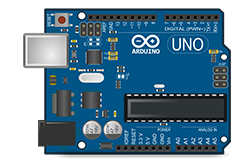
Item: S3-E03 "Introduction to Arduino"
Audience: Form 2 or above
Duration: 6 hours, 1.5 hours per lesson
Number of each class: less than 15 students. Each participant should bring a laptop to the course.
Content:
Arduino is a microprocessor that uses Atmel AVR as the core. Its abundance in open source software and hardware allows students not in the field of electronics to rapidly learn and construct their own electronic works. This course will introduce the development environment of Arduino. Students will use coding tools such as "mblock" to create interesting electronic works so that they can have a basic understanding of Arduino.
Charge:
- Arduino kit included: Held in the museum - MOP 150.00 per student. At school - MOP 250.00 per student.
- Arduino kit not included - Held in the museum - MOP 100.00 per student. At school - MOP 200.00 per student.
Outline:
- Introduction of Arduino
- Introduction of the programming language in Arduino
- Digital control (LED, button and buzzer)
- Analog control (LED, variable resistor and buzzer)
Note:
Fee includes a set of Arduino development kit and each student is recommended to bring a laptop to the course.
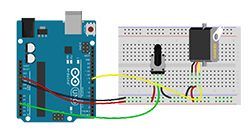
Item: S3-E04 "Intermediate Arduino Course"
Audience: Form 2 or above, completion of S3-E03 is required
Duration: 7.5 hours, 1.5 hours per lesson
Number of each class: less than 15 students. Each participant should bring a laptop to the course.
Content:
Arduino is a platform with open source software and hardware. Its abundance in accessories allows students not in the field of electronics to create multi-functional electronic works. Students should possess a basic knowledge of Arduino. They will learn about the accessories, including LED, switch, motor and different sensing components, etc. Using coding tools such as mblock, student will experience the whole development process by developing their own practical projects.
Charge:
- Arduino kit included: Held in the museum - MOP 250.00 per student. At school - MOP 350.00 per student.
- Arduino kit not included - Held in the museum - MOP 200.00 per student. At school - MOP 300.00 per student.
Outline:
- Review basic knowledge of Arduino.
- DC motor control.
- Servo motor control.
- Sensing components and relay control.
- Report
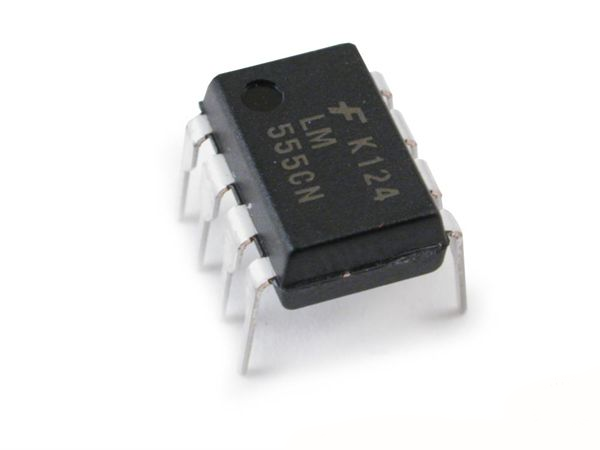
Item: S3-E10 "Introduction to Integrated Circuit (IC) and Its Applications"
Audience: F4 or above, completion of S3-E01 is recommended.
Duration: 6 hours (4 sessions), 1.5 hours per lesson
Content:
This course is one of our advanced electronic courses. The introduction to integrated circuit is a course that focuses on the basic knowledge and principle behind different integrated circuit (IC). With other common electronic components, students will learn to use soldering to create all kinds of useful application circuits based on various kind of IC.
Charge:
Held at the museum - MOP50.00 per student. At the school - MOP70.00 per student.
Outline:
Basic knowledge and the application of integrated circuit
Soldering of the integrated circuit
Soldering of the integrated circuit and its application circuit
Soldering of the integrated circuit and its application circuit
About CMM
Contact US
Others
Other Websites
Number of Visitors:
Last Modified Date: 20/08/2025